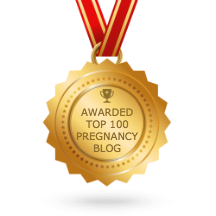Research Shows That Taking Childbirth Classes Has Positive Benefits:
- Better Outcomes for Mother & Baby
- Less Stress/Anxiety for Parents
- Increased Confidence
- Increased Satisfaction with Birth
- More Successful Breastfeeding
What Do I Need to Learn in a Childbirth Class?
- Stages of Labor
- Anatomy & Physiology of Labor
- Emotional Signposts of Labor
- Managing Pain
- Knowledge & Support Ideas for Your Birth Partner
- Medical Procedures and Interventions & Their Risks and Benefits
- Informed Consent
When Should I Start a Childbirth Class?
It’s best to begin in your 5th or 6th month. Try not to wait until your last month. Preparing for labor and birth takes time. You’ll go through emotional, physical, and psychological changes. It’s best to give yourself plenty of time to do so.
Be Prepared to Move During Labor
- Labor is an athletic event
- Labor is a normal, physiological event
- Don’t take it lying down (if you can help it)
- Change positions every 20-30 minutes
- The more you move, the faster you will dilate, and the more comfortable you will be
Practice is Key. Practicing Relaxation and Positions and Techniques Will Help You Have More Control in Labor
- Relaxation is a learned
- It takes practice together
- Role of the Support Person
spouse, partner, baby’s father, relative, friend, certified doula
What are the jobs of the Support Person/Birth Partner?
- Physical Support– Help mom with position changes, getting you to u
 rinate hourly as well as eat and drink
rinate hourly as well as eat and drink - Emotional Support – Creating a Positive Environment by, encouraging, reassuring, praising
- Provide Updates to Family & Friends
- Trains and Practices with the Pregnant Woman in Using Comfort Measures, Relaxation & Breathing Techniques
- Times Contractions
- Crowd Control
WHAT IS THE GATE CONTROL THEORY? HOW DO I USE IT TO MANAGE PAIN IN LABOR?
“The Gate Control Theory of Pain is a mechanism, in the spinal cord, in which pain signals can be sent up to the brain to be processed to accentuate the possible perceived pain or attenuate it at the spinal cord itself. [1] The ‘gate’ is the mechanism where pain signals can be let through or restricted. One of two things can happen, the gate can be ‘open’ or the gate can be ‘closed’[1]
If you’ve ever burned your hand on the stove, the first thing you do is place your hand under cold running water to ease the pain. The pain goes away under the water. The moment you remove your hand from the cold water, the pain comes roaring back. The reason is that when you introduce sensations of pleasure, it “closes” the gates to sensations of pain. The sensations of pain travel slower to the brain. Those of pleasure travel faster and ease the pain. During labor, the following techniques can ease the pain, and help a woman in labor cope with the sensations of the contractions:
- Relaxation (aka hypnosis)
- Breathing
- Heat/Cold
- Massage/Touch/Pressure
- Hydrotherapy
- Positions
- TENS Unit
- Vocalization
- Aromatherapy
- Acupuncture/Acupressure
- Emotional Support/Encouragement
- Pharmacological
Listen to My Guided Relaxations to Prepare for Labor
3 Types of Relaxation:
Physical…Mental…Emotional
- Physical – Progressive Muscle Relaxation, Tense/Release, the Conscious
Release of Muscles - Mental – What you’re thinking about, focusing on, like Meditation, Music, Encouragement, Mindfulness, Photos, Poems, Prayers, Affirmations, & Guided Imagery, Lighting, Aromatherapy
- Emotional – How you feel about what is happening to you in labor
BREATHING TECHNIQUES
- CLEANSING BREATH – A deep breath followed by an audible sigh out of the mouth at the beginning & end of every contraction, known as a cleansing breath. This gives an extra boost of oxygen for you and your baby
- Slow, DEEP ABDOMINAL BREATHING stimulates the relaxation response
- Paced breathing – inhale to a count of 4 seconds, exhale to a count of 4 seconds
- VOCALIZATION – inhales followed by deep, low moans (think of a monk chanting). This cues you to release tension and relax
- Centering Breath – Inhale Count to 4, Exhale to a count of 8
- Inhale and with each breath out, relax a muscle group, one at a time from the top of your head to the tips of your toes.
How to Give a Massage to a Pregnant Woman
TOUCH – releases endorphins, and gives a sense of well-being, and comfort.
- Effleurage
- Massage
- Stroking Technique
- Pressure
- Effleurage – a light circular stroke of the lower abdomen
- Stroking Technique
- Massage
- Relieve Back Pain
Counter Pressure Pressure On the Sacrum and the Double Hip Squeeze
Hydrotherapy
- Bath
- Shower
Aromatherapy Oils or Essential Oils
- Lavender dulls pain, relaxes, calming
Chamomile
Geranium circulation, aids breathing, balance emotions
Jasmine analgesic, antispasmodic
Neroli reduces fear, anxiety
Rose-tones uterus & increases circulation, antidepressant, calms nerves,
Clary Sage tension reliever creates euphoria
Gentle Baby (Young Living)
- “With TENS on LOW INTENSITY, you’re flooding the brain with this sensory buzzing feeling so that the brain can’t really perceive the sensation from labor contractions as much.
- Diffuse Noxious Inhibitory Control is that by stimulating the body with another source of pain ON HIGH INTENSITY, you trigger the body to release its own natural pain-relieving hormones called endorphins.” evidencebasedbirth.com
MUSIC – “Music is inherently emotional and it probably has benefits that are independent of just strictly different types of sounds and frequencies.” www.evidencebasedbirth.com
- Entrainment – your body’s ability to respond to and synchronize its internal state with the external environment, including sound and rhythm
- Binaural Beats – Researchers think that binaural beats might alter your brain waves
IF YOU WANT MORE DETAILED INFORMATION AND INSTRUCTION, SIGN UP FOR MY BRADLEY METHOD® OF NATURAL CHILDBIRTH CLASS. SEE THE SCHEDULE











